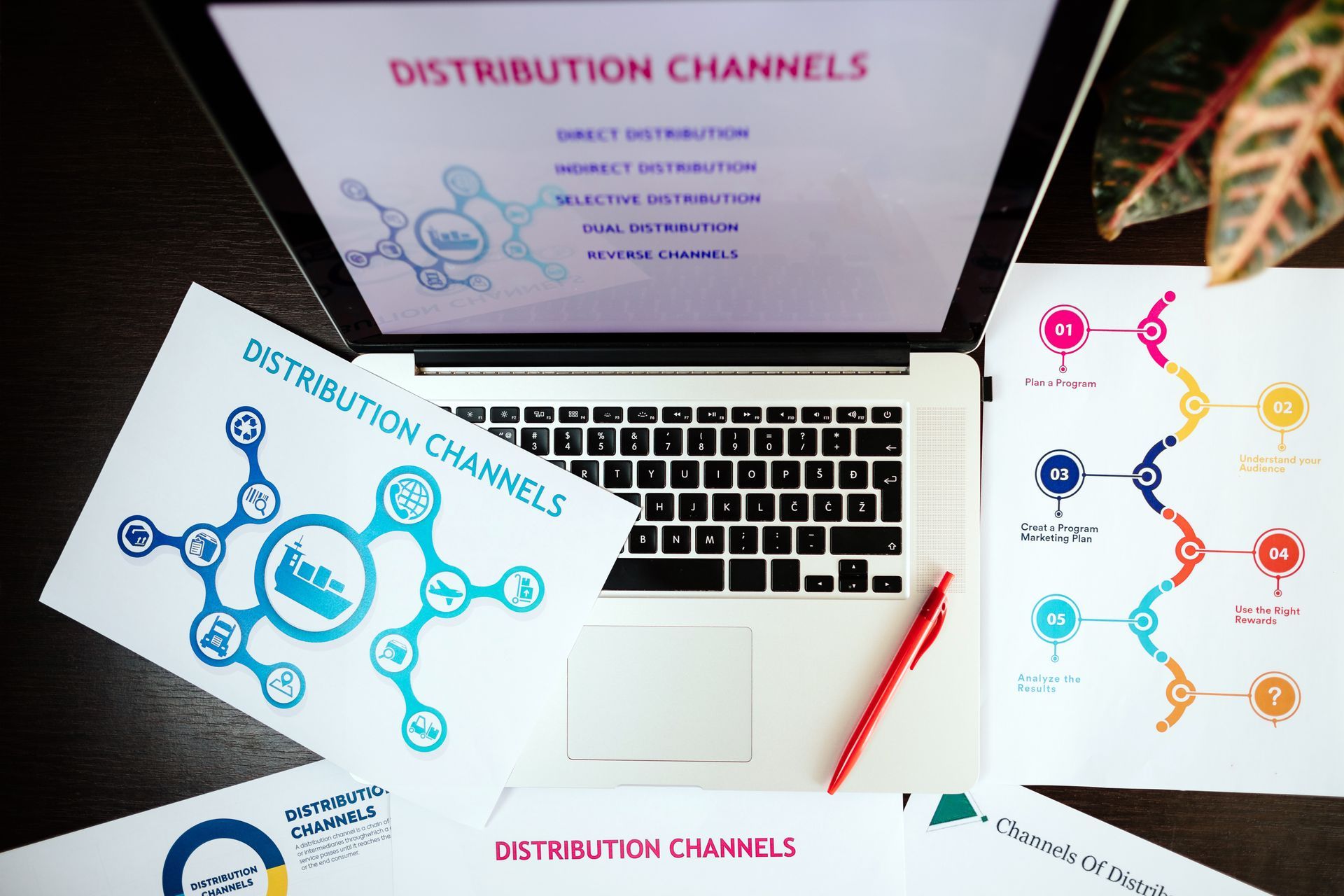Benchmarking Success: LayerFive Analytics vs Traditional Tools

Did you know companies using data-driven marketing are six times more likely to make a profit? This shows how vital the right tools are for success.
At LayerFive, we unlock your consumer data's full power. Our Marketing Analytics solutions boost marketing performance and reduce costs for data privacy.
LayerFive Analytics gives a more advanced way to make decisions. It helps businesses stay ahead of the game.
Key Takeaways
- LayerFive Analytics boosts data-driven marketing strategies.
- Traditional tools often can't optimize marketing performance well.
- LayerFive's solutions improve data privacy compliance.
- Businesses using LayerFive Analytics see big gains in profitability.
- LayerFive offers a more advanced approach than traditional analytics tools.
The Current State of Marketing Analytics
Marketing teams face big challenges today. They struggle to link their spending to the right channels and find real customers. The digital world is now more complex than ever.
Challenges in Today's Fragmented Digital Landscape
The digital world has grown, making it hard for marketers to understand their customers. Consumer identification and channel attribution are major issues.
Consumer Identification Difficulties
Finding real customers is tough. Ad blockers, cookie limits, and privacy laws make it hard to track them.
Channel Attribution Complexities
It's hard to know which channels are working best. With many channels and devices, it's complex to see which ones drive sales.
The Cost of Ineffective Data Management
Bad data management costs marketers a lot. It wastes budgets and misses chances.
Marketing Budget Waste Statistics
Many marketing budgets are wasted. This hurts profits and makes it hard to improve strategies.
Opportunity Costs of Poor Data Clarity
Poor data means missed chances. Marketers can't make good choices or improve campaigns. This puts them at a disadvantage.
Understanding the Marketing Analytics Platform Ecosystem
Digital marketing has changed a lot, and so have the tools for analyzing it. The marketing analytics platform ecosystem is now complex, with many solutions available. It's key to know how marketing analytics tools have evolved and what makes up modern analytics solutions.
Evolution of Marketing Analytics Tools
The world of marketing analytics has seen big changes over time. Marketing data platforms are now vital, giving marketers the insights they need to make smart choices.
From Basic Web Analytics to Integrated Platforms
At first, web analytics tools just tracked website traffic and basic user actions. But now, they've grown into platforms that handle complex data from many sources. This lets marketers understand their customers' paths better.
The Rise of AI and Machine Learning in Analytics
AI and machine learning have changed marketing analytics a lot. They help marketers analyze huge amounts of data fast and right. Predictive analytics and personalization are big areas where these technologies help. They let businesses guess what customers want and adjust their marketing plans.
Key Components of Modern Analytics Solutions
Modern marketing analytics solutions need a few key parts to give useful insights. These include a good data collection setup and tools for processing and showing data.
Data Collection Infrastructure
A strong data collection infrastructure is key for getting and processing lots of data from marketing campaigns. It must handle data from different places, like social media, email, and websites.
Processing and Visualization Capabilities
After collecting data, it needs to be processed and shown in a way that helps marketers. Advanced data visualization tools help businesses understand complex data, spot trends, and make informed decisions.
Our Marketing Data Platform fills these gaps. It unifies consumer identities, improves attribution, and follows GDPR/CCPA rules. This makes it a full performance tracking tool for marketers to better their campaigns and ROI.
The Data Crisis Facing Modern Marketers
Billions are wasted in digital marketing because of unclear data analysis. This is a crisis that modern marketers must tackle. The complexity of digital marketing analytics has become overwhelming. Marketers find it hard to understand the vast data they have.
The main problems are identity resolution and attribution accuracy. These issues are linked, making it hard for marketers to get clear results from their campaigns.
Identity Resolution Challenges
Understanding the audience is key in online marketing analysis. But, this process is full of challenges.
Cross-Device Tracking Issues
Tracking users across devices is a big problem. As people switch devices, it's hard to follow their actions. This leads to broken data and a poor understanding of customer paths.
Cookie Deprecation Impact
With cookies being phased out, tracking user behavior gets even harder. Marketers must find new, less reliable ways to collect data.
Attribution Accuracy Problems
Marketers struggle to accurately attribute conversions to their efforts. This is key to knowing if campaigns work.
Multi-Touch Attribution Failures
Multi-touch attribution models aim to show the whole customer journey. But, they often don't work well. Their complexity and the lack of clear data in some digital marketing analytics tools make them less effective.
The Black Box of Marketing ROI
The goal of marketing attribution is to see the ROI of marketing efforts. But, some analytics tools are too opaque. This makes it hard for marketers to rely on the data and make smart choices.
The data crisis in marketing is complex and needs a thorough solution. By tackling the issues in identity resolution and attribution accuracy, marketers can start to make better decisions.
Traditional Analytics Tools: Capabilities and Limitations
Marketers face big challenges in today's digital world. Traditional analytics tools, once key, now show their limits. They struggle to meet the demands of modern marketing.
Standard Features of Legacy Platforms
These tools have many features that have been improved over time. They focus on how data is collected and how it's presented.
Data Collection Methods
Older platforms use cookies, pixels, and server-side tracking to collect data. This helps marketers understand how users interact across devices. But, issues like ad blockers, cookie expiration, and data sampling can affect the data's accuracy.
Reporting and Dashboard Functionality
These tools offer detailed reports and dashboards. They help marketers see how campaigns are doing. But, the complexity can make it hard to find useful insights.
Where Traditional Tools Fall Short
Traditional tools have big drawbacks, mainly with siloed data and identity resolution.
Siloed Data Challenges
One big problem is siloed data. When data is split, it's hard to see the whole picture. This leads to incomplete insights and fragmented marketing strategies.
Limited Identity Resolution Capabilities
These tools also struggle with identity resolution. They can't always link different data points to the same customer. This results in inaccurate attribution, poor customer profiling, and ineffective personalization.
In summary, while traditional tools were good in the past, they're not enough today. Marketers need to look at new solutions, like LayerFive's Marketing Analytics Platform, to improve ROI and trust.
"The future of marketing analytics lies in the ability to unify customer data and provide accurate attribution across the entire customer journey."
Introducing LayerFive's Marketing Analytics Platform
LayerFive is changing the game in marketing analytics. It combines the latest tech with a focus on the user. This analytics software boosts marketing performance and cuts costs on data privacy.
Core Technology and Architecture
The heart of LayerFive's platform is its strong tech and design. It's built to tackle the challenges of today's marketing data. At its core, it has a unified data foundation that brings together different data sources into one clear view.
Unified Data Foundation
This unified method lets marketers see their customer interactions in all channels. It puts all data in one place, making it easier to manage and make decisions based on data.
Real-Time Processing Capabilities
LayerFive's platform is made for real-time processing. This means marketers can quickly respond to new trends and customer actions. In today's fast world, being quick with insights is key to success.
Key Differentiators and Innovations
LayerFive stands out because it focuses on innovation and the customer. Its advanced features aim to fix what's wrong with old analytics tools.
Advanced Identity Resolution
One key feature is its advanced identity resolution. It accurately connects customer interactions across devices and platforms. This gives a deeper look at customer behavior, helping with better targeting and personalization.
Privacy-First Design Philosophy
LayerFive's platform is built with a privacy-first design philosophy. It makes sure data privacy and compliance are key parts of its design. This not only meets legal standards but also builds trust with customers.
With these advanced features and a focus on privacy, LayerFive's Marketing Analytics Platform is a top choice for businesses looking to improve their marketing analytics.
Consumer Identity Unification: LayerFive vs. Traditional Methods
Effective consumer identity unification is key to successful marketing. LayerFive stands out in this area. Our Marketing Data Platform brings together consumer identities from various touchpoints. This gives a full view of how customers interact with us.
How Traditional Tools Handle Identity
Traditional tools use old methods for unifying consumer identities. This leads to broken customer profiles and wrong data. These issues make marketing less effective.
Cookie-Based Tracking Limitations
Cookie tracking, used by many traditional tools, has big problems. Cookies can be blocked or expire, leaving us with bad data. This makes it hard to create targeted marketing.
Fragmented Customer Profiles
Old tools can't unify identities well, causing broken customer profiles. This messes up marketing efforts, hurting campaign success.
LayerFive's Advanced Identity Resolution
LayerFive's Advanced Identity Resolution solves the problems of old tools. It uses lasting identity management and recognizes consumers across channels. This gives us complete and correct customer profiles.
Persistent Identity Management
Our persistent identity management keeps consumer identities together through many interactions. This gives a clear and accurate view of customer data. It helps marketers make better campaigns.
Cross-Channel Consumer Recognition
LayerFive can see consumers across different channels. This lets us understand customer behavior in a unified way. It's vital for making marketing strategies that really connect with our audience.
Using LayerFive's Marketing Data Platform helps businesses get past the problems of old tools. It leads to better consumer identity unification. This boosts the success of marketing efforts.
Attribution Models Compared
In digital marketing analytics, attribution modeling is key. It shows how different touchpoints lead to conversions. But, not all models are the same.
Limitations of Traditional Attribution
Traditional attribution models have big problems. They make it hard for marketers to really see how well campaigns work. Two main issues are:
Last-Click Attribution Problems
Last-click attribution only credits the last touchpoint before a sale. It ignores the role of earlier interactions. This simple model can't handle today's complex customer journeys.
Channel Isolation Issues
Traditional models often treat each channel separately. They don't show how different marketing efforts work together. This gives a partial view of how channels drive sales. A marketing expert once said, "Attribution is not just about giving credit. It's about seeing the customer's whole journey."
"The future of attribution modeling lies in its ability to accurately reflect the complexity of the customer journey."
LayerFive's Enhanced Attribution Capabilities
LayerFive's attribution model fixes the old ways' problems. It gives a deeper look into marketing success. Key improvements are:
Multi-Touch Attribution Accuracy
LayerFive's model spreads credit fairly among all touchpoints. This gives a clearer picture of each channel's role. It helps marketers improve their campaigns.
LayerFive also uses incremental measurement. This shows the real impact of marketing efforts. It helps marketers spend their budget wisely.
LayerFive boosts attribution accuracy and meets GDPR/CCPA rules. Its advanced tools help marketers make smart, growth-driving decisions.
Data Privacy Compliance: GDPR and CCPA
Data privacy laws like GDPR and CCPA are changing fast. This creates big challenges for marketers. It's key for businesses to keep up to avoid big fines and harm to their reputation.
Compliance Challenges with Traditional Tools
Old marketing analytics tools struggle with data privacy rules. They have trouble with getting consent and handling data requests.
Consent Management Difficulties
Getting consent from users is hard, with many data sources involved. Old tools can't handle consent well, risking non-compliance.
Data Subject Request Fulfillment
GDPR and CCPA let people see, change, or delete their data. Old tools can't handle these requests fast, putting companies at risk.
How LayerFive Simplifies Compliance
LayerFive's Marketing Analytics Platform focuses on data privacy. It has features for easy consent and data request handling.
Built-in Consent Management
LayerFive has a consent system built in. It helps businesses get and manage consent right. This meets GDPR and CCPA rules.
Automated Compliance Workflows
The platform automates workflows for compliance. This makes it easy to handle data requests. With LayerFive, companies can quickly respond, avoiding fines.
Using LayerFive's platform helps businesses meet data privacy rules. It also gives them a market edge. Our solutions save money on compliance, letting marketers focus on data-driven marketing for growth.
"The future of marketing analytics is not just about data; it's about doing what's right by your customers." -
Marketing Expert
- Simplified consent management
- Automated compliance workflows
- Enhanced data privacy compliance
In conclusion, LayerFive's approach to data privacy is a game-changer. By choosing LayerFive, companies are ready for GDPR and CCPA challenges now and in the future.
Performance Metrics: Benchmarking the Difference
To understand the true value of a marketing intelligence tool, we must look at performance metrics. These metrics guide business decisions. By comparing them, marketers see how different tools perform in real life.
Key Performance Indicators (KPIs)
KPIs are key to judging marketing success. They offer a clear way to measure performance. This helps marketers tweak their strategies.
Marketing Efficiency Metrics
- Cost per acquisition (CPA)
- Return on ad spend (ROAS)
- Marketing qualified leads (MQLs)
These metrics show how well campaigns work. They help spot where to get better.
Data Quality Measurements
Data quality is essential for good decisions. Metrics like data completeness and accuracy are critical. They show if analytics software is reliable.
Real-world Performance Comparisons
Comparing LayerFive Analytics with other tools in real life is very useful. It highlights their strengths and weaknesses.
Case Study: E-commerce Performance Lift
An e-commerce brand boosted its conversion rates by 25% with LayerFive Analytics. This was due to its advanced features.
Case Study: B2B Lead Attribution Improvement
A B2B company's lead attribution got 40% better with LayerFive. This led to more focused marketing and higher ROI.
By focusing on these metrics and real-world examples, marketers can make smart choices. This leads to better ROI and more trust from consumers.
Cost Analysis: ROI of LayerFive vs. Traditional Solutions
Businesses want to get the most from their marketing budgets. A detailed look at analytics tools' costs is key. The ROI of a marketing analytics platform greatly affects a company's choices.
Total Cost of Ownership Comparison
It's important to understand the total cost of owning (TCO) analytics tools. This includes more than just the initial cost.
Direct Platform Costs
Direct costs are the obvious expenses of marketing analytics tools. LayerFive has competitive pricing that fits businesses' needs. It's a cost-effective performance tracking tool. Traditional solutions often have fixed prices that don't match a company's use or needs.
Implementation and Maintenance Expenses
Costs for setting up and keeping tools running are part of the TCO. LayerFive's marketing data platform is easy to integrate, cutting down on IT support and maintenance costs. Traditional tools need more IT support and maintenance, raising their total cost.
Long-term Value Proposition
The long-term value of a marketing analytics platform is key to its ROI. LayerFive's approach offers lasting benefits.
Marketing Budget Optimization
LayerFive helps businesses use their marketing budgets better. It gives clear insights into campaign results. This way, companies can use their marketing dollars wisely.
Compliance Cost Reduction
Meeting data privacy rules like GDPR and CCPA is a big deal for companies. LayerFive's marketing data platform makes compliance easier, saving on costs. This is a big plus compared to traditional tools, which can be more expensive to keep up with regulations.
In summary, LayerFive is a better choice than traditional marketing analytics solutions. It's more affordable and efficient. LayerFive helps businesses get the most from their marketing budgets by cutting down on costs.
Implementation and Integration Considerations
In the world of digital marketing analytics, how easy it is to set up and connect a platform matters a lot. This is true for businesses deciding between LayerFive and old systems.
Starting with a new marketing analytics platform is a big job. It needs careful planning and doing. The effort needed can change a lot based on the choice made.
Deployment Complexity: Traditional Tools vs. LayerFive
Old analytics tools can be hard to learn and set up. LayerFive makes this part easier.
Implementation Timeline Comparison
LayerFive is faster to start up than old tools. While old tools might take weeks or months, LayerFive can start in a much shorter time.
Technical Resource Requirements
The skills needed to set up LayerFive are different from old tools. LayerFive is easy to use and has good support, so you don't need a lot of tech know-how.
Integration with Existing Marketing Stacks
How well a tool works with what you already have is key. LayerFive has a strong API and connector system for easy integration.
API and Connector Ecosystem
- LayerFive has connectors for many marketing tools.
- The API is well-documented and simple to use.
- Custom integrations can be made quickly.
Data Migration Strategies
LayerFive also makes moving data easy with its tools. This means businesses can switch to the new platform without losing data or having to stop work for long.
LayerFive makes starting and connecting easier. This lets businesses focus on using their marketing data to make smart choices.
Use Cases: LayerFive Across Different Business Models
LayerFive's Marketing Analytics Platform helps in various business areas. It's great for e-commerce, B2B, and enterprise data services. It tailors solutions to boost your data-driven marketing strategies.
E-commerce and Shopify Integration
LayerFive works well with e-commerce platforms like Shopify. It gives insights into what customers like and do.
Customer Journey Optimization
By studying how customers interact, businesses can improve the customer journey. This makes the experience better and builds loyalty.
Conversion Rate Improvements
E-commerce sites can find and fix issues in the buying process with LayerFive. This helps increase conversion rates.
B2B Marketing Analytics
For B2B marketers, LayerFive has advanced tools. These help understand complex customer behaviors and preferences.
Lead Scoring Enhancement
LayerFive's platform can make lead scoring better. It gives a deeper look at lead behavior, helping focus on the most valuable leads.
Account-Based Marketing Insights
The platform offers insights for account-based marketing. This lets businesses tailor their marketing better.
Enterprise Data Services
LayerFive's Marketing Analytics Platform meets the needs of big companies. It offers detailed data services.
Cross-Department Data Unification
It unifies data across departments. This gives a complete view of operations, helping make better decisions.
Advanced Segmentation Capabilities
The platform's advanced segmentation lets businesses target marketing efforts better. This makes campaigns more effective.
In summary, LayerFive's Marketing Analytics Platform is flexible and strong. It meets the needs of e-commerce, B2B, and big businesses. It drives data-driven marketing success.
Future-Proofing Your Marketing Analytics Strategy
Marketing analytics is always changing, and keeping up is key. In today's fast world, businesses need to adapt fast. They must use analytics software that can grow with them.
Emerging Trends in Marketing Data
The world of marketing data is changing a lot. New tech and how people act are driving these changes. Two big trends are first-party data and AI in analytics.
First-Party Data Importance
First-party data is getting more valuable as privacy rules get stricter. It helps businesses connect better with their customers. This data, from customers directly, gives accurate insights into what people like.
AI-Driven Predictive Analytics
AI is changing how we predict the future. It uses smart algorithms to help marketers make better choices. This way, they can make their strategies more effective.
How LayerFive Addresses Future Challenges
LayerFive is leading the way in marketing analytics. Its marketing intelligence tool helps businesses stay ahead. It gives them the tools to adapt quickly.
Adaptable Architecture
LayerFive's design makes it easy to work with new tech. This means businesses can grow and change their analytics as needed.
Continuous Innovation Roadmap
LayerFive is always innovating. It focuses on new trends and tech. This keeps its users up-to-date with the latest tools.
Conclusion: Making Every Marketing Dollar Count
In today's digital world, getting the most out of your money is key. LayerFive's Marketing Analytics Platform is a top tool for tracking performance. It lets businesses make smart choices based on data.
LayerFive brings together customer data and improves how we track results. This means marketers can really get to know their customers. It's a game-changer for understanding what works.
As a leading marketing data platform, LayerFive makes handling data easier. It ensures you follow important rules like GDPR and CCPA. This leads to more accurate tracking and better use of your budget.
Choosing LayerFive means your marketing efforts will be more effective. Every dollar you spend will count more. It's a smart move for any business looking to grow.
LayerFive is changing the way we do marketing analytics. By using LayerFive, marketers can stay ahead and achieve real growth. It's a step towards a brighter future in marketing.
FAQ
What is LayerFive Analytics, and how does it differ from traditional marketing analytics platforms?
LayerFive Analytics is a Marketing Analytics Platform. It offers a unified data foundation and advanced identity resolution. It also has real-time processing capabilities. This makes it different from traditional tools by providing a more complete and integrated solution for improving marketing performance and ensuring data privacy.
How does LayerFive's Marketing Data Platform address identity resolution challenges?
LayerFive's platform unifies consumer identities across multiple touchpoints. It provides a persistent identity management system. This enhances attribution accuracy and ensures GDPR/CCPA compliance.
What are the limitations of traditional attribution models, and how does LayerFive improve upon them?
Traditional attribution models often rely on last-click attribution or simplistic methods. They fail to accurately capture the complexity of modern customer journeys. LayerFive's Multi-Touch Attribution capabilities provide a more nuanced understanding of marketing effectiveness.
How does LayerFive simplify data privacy compliance with regulations like GDPR and CCPA?
LayerFive's platform includes built-in consent management and automated compliance workflows. This streamlines the process of ensuring data privacy compliance and reduces associated costs.
What kind of performance metrics can I expect from LayerFive's Marketing Analytics Platform?
LayerFive provides a range of Key Performance Indicators (KPIs). These include marketing efficiency metrics and data quality measurements. This allows businesses to benchmark their performance and identify areas for improvement.
How does LayerFive's cost structure compare to traditional marketing analytics solutions?
LayerFive offers a competitive Total Cost of Ownership. It has transparent direct platform costs and reduced implementation and maintenance expenses. This provides a strong Return on Investment (ROI).
Can LayerFive integrate with my existing marketing stack?
Yes, LayerFive's platform is designed to integrate seamlessly with a wide range of marketing tools and systems. It does this through its API and connector ecosystem. This ensures smooth data migration and minimizes deployment complexity.
What use cases is LayerFive suitable for?
LayerFive is versatile and can be applied across various business models. This includes e-commerce, B2B marketing analytics, and enterprise data services. It helps businesses optimize their marketing strategies and improve customer engagement.
How does LayerFive stay ahead of emerging trends in marketing data?
LayerFive is committed to continuous innovation. It has an adaptable architecture and a continuous innovation roadmap. This ensures the platform remains at the forefront of marketing analytics. It incorporates advancements like AI-driven predictive analytics and the importance of first-party data.
You might also like:




